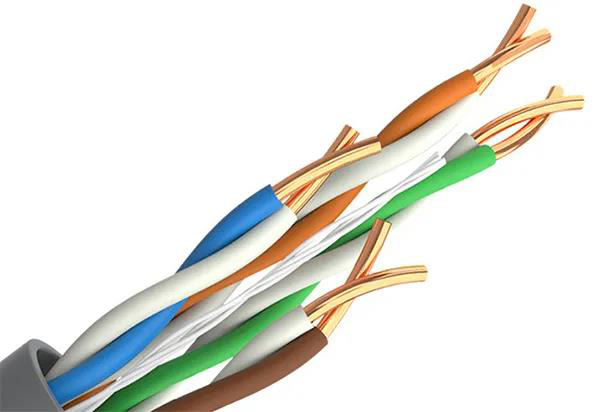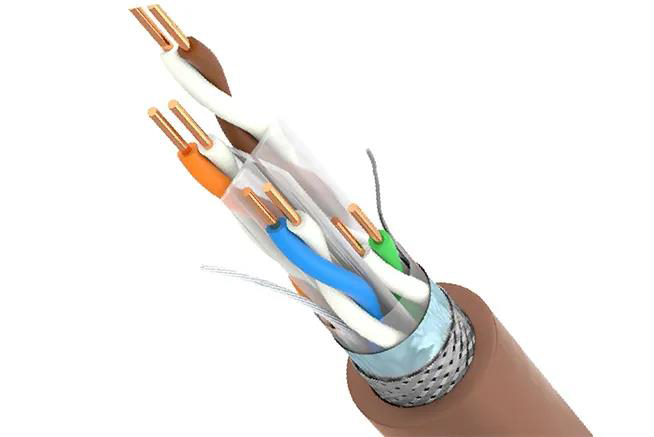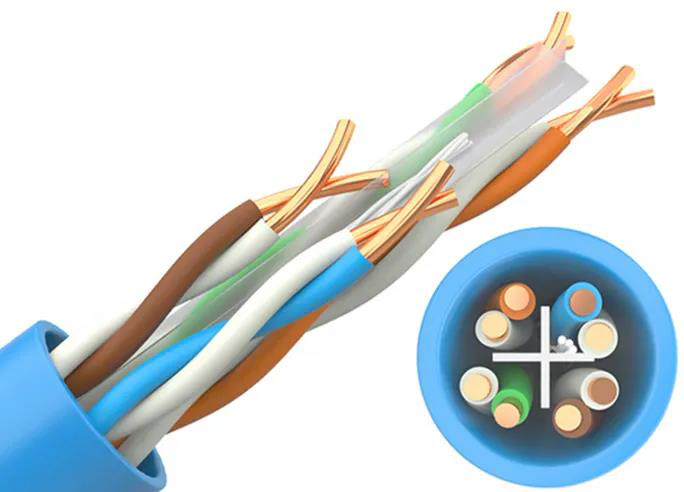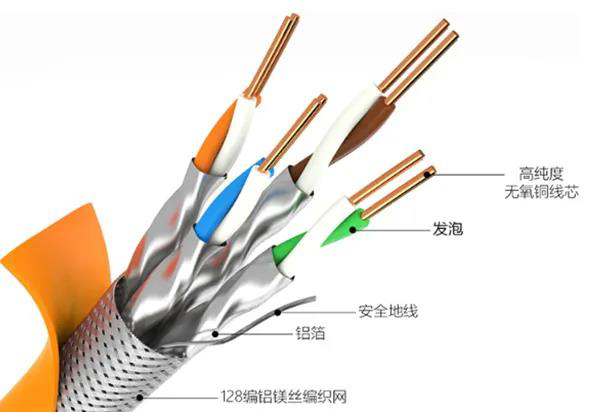
There are three types of network transmission
media: coaxial cables, network cables, and optical fibers. As an important
carrier for network signal transmission, network cables are composed of two
copper wires with an insulating protective layer. Two insulated copper wires are
twisted together at a certain density. The radio waves radiated by each wire
during transmission will be offset by the radio waves emitted by the other wire,
effectively reducing the degree of signal interference. Therefore, it is also
called double Twisted pair (TP).
Classified by different performance
▶Category 5e network cable CAT5E
Category 5e network cable is the most commonly used type of network cable in
life. Because the wiring is simple, the price is much cheaper than other network
cables. The transmission rate is up to 100Mbps, and it is durable and does not
drop out.
The international network cable is made of oxygen-free copper with a copper core
and a copper core diameter of 0.51mm, which stably supports 100M network.
Because the resistance of oxygen-free copper is the smallest compared with
others, the resistance per hundred meters is about 9.5Ω. The resistance is
small, the transmission rate is relatively high, and the service life is
relatively long. Generally, we choose household network cables. For the sake of
economy, we can choose this type of network cable.
▶Category six network cable CAT6
Category 6 network cable is an upgraded version of Category 5e network cable. It
has high transmission efficiency and various parameters have been greatly
improved compared with Category 5e.
The transmission rate reaches 1000Mbps. Compared with Category 5e cables, an
insulating cross frame is added in the middle, the isolation effect is better,
and the diameter of the cable is also thicker.
Copper core wire diameter 0.58mm, high-quality thickened conductor wire core,
thickened pure copper shrapnel, gold-plated contacts, crystal clear and good
toughness, PE middle quilt and PVC outer quilt material, not only wear-resistant
and anti-bending, but also improves the strength of the wire core service life.
Those who have higher requirements for network transmission may wish to try this
type of network cable, and the network speed output of this type of network
cable is also relatively stable.

▶Category 6e network cable CAT6E
Category 6e network cable is an upgraded version of Category 6 network cable, so
it is also called "enhanced Category 6 network cable". It has better performance
than Category 6 network cable in aspects such as external crosstalk. Compared
with Category 6 network cables, Category 6e network cables have a larger outer
diameter, heavier weight, and a larger minimum bending radius. Category 6e
cables can still operate normally in high-performance cabling systems at -20 to
60°C. When the transmission rate is 10Gbps, the transmission distance can reach
100m. At the same time, it is backward compatible with all previous categories.

▶Category seven network cable CAT7
Category 7 network cables use oxygen-free copper as the core. The transmission
frequency can reach at least 600MHz, the transmission rate can reach 10Gbps, and
the performance is excellent.
Pure copper wire core, eight cores and seven strands, can stably transmit 10G
network signals.
Zero signal attenuation, high speed, high transmission, strong performance,
stable and barrier-free network transmission, faster, more stable, safer and
more environmentally friendly.
The performance has been greatly improved compared to Category 5e and Category
6, but the wiring construction is slightly complicated.
